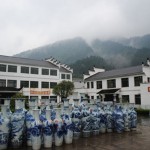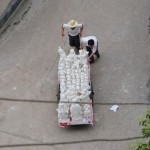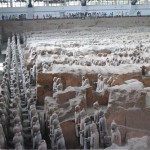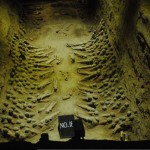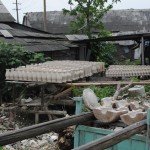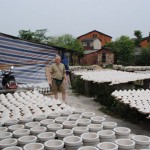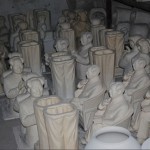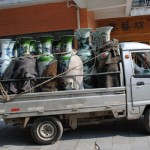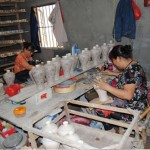This summer Art and Design ceramics professor Keith Ekstam spent four weeks in Jingdezhen, China, as a visiting artist resident.
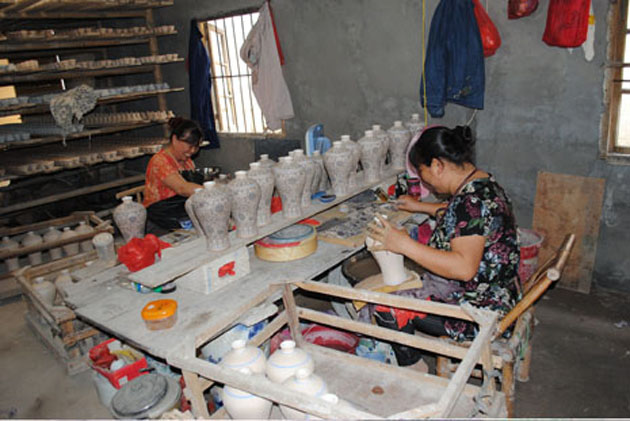
With assistance from a summer faculty fellowship through Missouri State, Ekstam received funds for travel expenses to and from China as well as housing and studio space to complete his residency.
Ekstam’s studio was located at the residency organization called The Pottery Workshop at The Sculpture Factory in Jingdezhen.
“The Pottery Workshop opened seven years ago in an old factory area that was used to make Chinese propaganda sculptures,” Ekstam explains. “When you walk into a kiln, you might still see dozens of Chairman Mao sculptures.”
Ekstam worked mostly with porcelain while visiting China, and he learned the Chinese techniques associated with porcelain artistry. The techniques developed by the Chinese have been used for so long that the Chinese artists have perfected them. Porcelain, a challenging substance to manipulate, is the main medium for pottery in China.
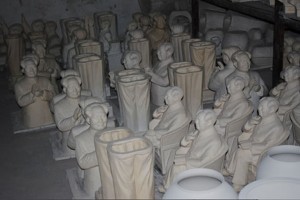
“Over 1000 years ago [the Chinese] invented porcelain in Jingdezhen,” Ekstam states. “They still hand paint and carve pottery the old fashioned way.”
The ceramics of the region encompass Ekstam’s most memorable experience while working in Jingdezhen.
“The way they use porcelain is so unique,” Ekstam says. “After thousands of years they have it figured out. It is very different from what we do here; it’s stunning.”
According to Ekstam, the Chinese treat porcelain differently than artists from the west. Western artists tend to treat the substance cautiously if they attempt to use it at all. The Chinese are more aggressive when working with porcelain, because they are more technically advanced.
Ekstam also experienced the typical street scenes in Jindezhen and the setting of a very busy, yet normal, city.
“The everyday occurrence of being in the energy of the city was very memorable,” Ekstam recalls.
Part of the typical street scene includes an overwhelming emphasis on ceramics. Everywhere in Jingdezhen there is porcelain. Ekstam remembers walking down an alley and seeing many varieties of pots and sculptures. A fairly common sight in Jingdezhen is a neighborhood with blocks and blocks of stacked plates that have been there for years from an abandoned plate factory.
“There were thousands of ceramic surprises everywhere,” Ekstam says. “It is stunning to someone in my field.”
Due to the vast number of ceramic pieces in the city, there are people in Jingdezhen who transport the pots any possible way they can.
“People would roll pots, load them into trucks or put them on motorcycles just to get the large number of pots transported,” Ekstam explains.
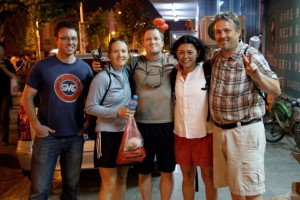
The reason, according to Ekstam, there are so many ceramic pieces in the city is because a large percentage of the region is tied to the porcelain and ceramics trade. There are many skilled artists and studios in the city that are inexpensive to employ. Ekstam was able to utilize the talents of these artists and studios while creating his own work. Ekstam would create one small sculpture then a local artist would make a mold of the small sculpture, pour slip into the mold, then fire and paint the piece.
Most of the work Ekstam created as a resident artist he is shipping back to the states for exhibition, for other professional development opportunities, and for instructional purposes.
“[Professional development] is an ongoing process of trying to learn new things in my field,” Ekstam says. “There was a lot of information to take in during that month about porcelain and the traditional technique.”
All of the information Ekstam learned during his residency he plans to pass on to his students. He will display images of the traditional porcelain making and demonstrate the traditional techniques he witnessed.
While in China, Ekstam also traveled to the Han tomb and the famed Terra Cotta Warriors in Xi’an as well as several sites in Beijing.

